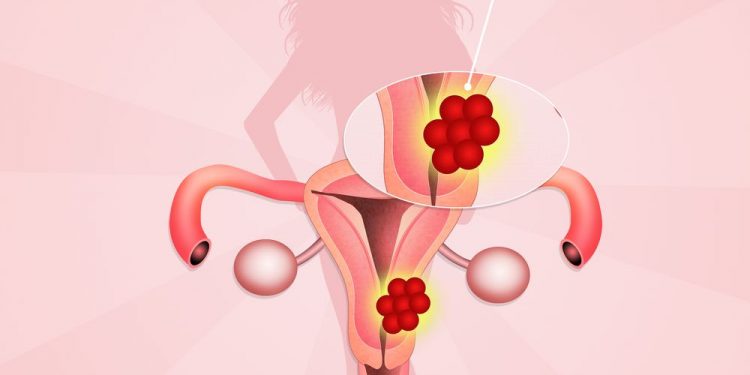The uterus is the hollow organ that carries the fetus in women. The innermost layer of the uterus is called Endometrium and a healthy Endometrium is essential for normal menstrual cycle and pregnancy. A thick Endometrium is required for successful implantation of fertilized eggs and supplying the fetus with all the nourishment needed for growth. Insufficient or abnormally thick Endometrium can cause recurrent miscarriages, infertility and other problems. The thickness of the uterine lining can be measured by transvaginal ultrasound which is quick, painless and cost-effective.
During the first part of the menstrual cycle, the lining of the uterus is thin. This is due to the imbalance between estrogen and progesterone. During ovulation, estrogen is released which thickens the endometrium lining for embryo implantation. Once implantation is complete, the progesterone level drops and the endometrium lining is shed to prepare for the next cycle. Those who have Endometrial Hyperplasia have little or no progesterone and the endometrium does not shed as it should.
Hyperplasia is a pre-cancerous condition that can be cured with medication. There are three stages of endometrial hyperplasia – simple hyperplasia, complex hyperplasia and severe atypical hyperplasia. The stage depends on how much the lining has changed, and how abnormal the cells are.

Simple hyperplasia is the earliest stage and does not usually require treatment. As the tissue changes, it becomes more abnormal and crowded with glands that are very close together. This is called complex hyperplasia and it may require limited treatment. It rarely progresses to cancer. Severe atypical hyperplasia is the latest stage and there is a 25-40% chance that cancer is also present but hasn’t developed yet.
Many women have a thick uterine lining because of ovulation problems or polycystic ovary syndrome (PCOS). These conditions are caused by too much estrogen and the body does not produce enough progesterone. Some of these issues can be corrected with medications and some lifestyle changes. Women can try eating a healthier diet that includes foods rich in iron, fish oil and dark leafy green vegetables. They can also take vitamins like Vitamin E and high doses of turmeric. Acupuncture and exercise also help to improve blood flow to the uterus.
In some cases, the problem is a symptom of an underlying disease such as uterine fibroids, pelvic inflammatory disease or long-term use of birth control pills. Some of these problems can be corrected with surgery. Medications that balance estrogen and progesterone are often effective in restoring a normal uterine lining. In rare cases, an abnormally thick lining may be a sign of endometrial cancer and requires urgent medical attention. A gynecologist can do a biopsy to confirm the diagnosis. A biopsy involves inserting an instrument into the vagina that aims sound waves at the endometrium and creates a pattern of echoes. The resulting image is then analyzed by a pathologist for signs of cancerous cells. The doctor can then recommend further testing and treatment.









